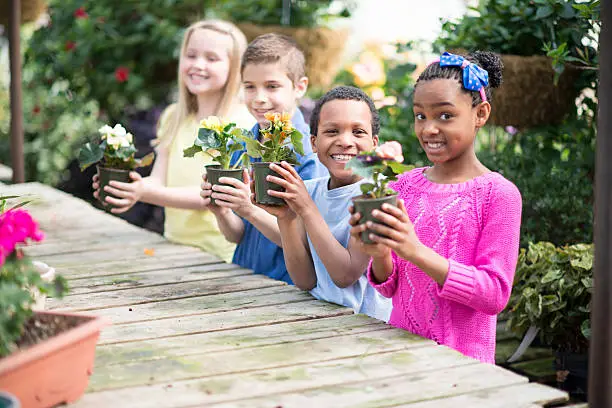Community and School Garden Grants.
Cultivating community and school gardens has emerged as a transformative practice to build sustainable communities, improve education, and strengthen local food systems. However, realizing such initiatives often demands significant resources. To alleviate this burden, various organizations provide garden grants.
This article explores these grants, discussing their eligibility requirements, application processes, and benefits. It also provides practical examples to illuminate these concepts.
Understanding Community and School Garden Grants
Community and school garden grants are financial support mechanisms offered by different entities—ranging from the government to non-profit organizations and corporations—designed to encourage the creation and maintenance of garden projects. Often, they’re aimed at enhancing environmental awareness, promoting healthy eating habits, and fostering community engagement.
Grants, unlike loans, do not need to be paid back and can significantly reduce the financial constraints on garden projects. Commonly, these funds support the purchase of gardening supplies, educational materials, soil improvements, and irrigation systems.
Identifying Appropriate Grants
Many grants are available, each with unique eligibility requirements and funding focus. For example, the Whole Kids Foundation, offers the School Garden Grant Program, supporting edible educational gardens on school grounds. Public, private, and non-profit schools, as well as garden-related nonprofit organizations, are encouraged to apply.
The US Department of Agriculture’s (USDA) Farm to School Grant Program is another excellent option. It seeks to improve access to local foods in schools, and one of the ways it accomplishes this is by funding the creation of school gardens. School districts, non-profits, state and local agencies, and universities are among the entities eligible for this grant.
Other grants, such as the Annie’s Grants for Gardens, are available to a broader range of applicants. This includes pre-school to high school levels, whether public, private, or charter, including after-school programs. Annie’s aims to connect kids with real food, helping them to start and maintain school gardens.
Application Process and Best Practices
The application process for garden grants usually requires a detailed project description, clear goals and objectives, a realistic budget, and a sustainability plan. It’s crucial to tailor each application to the specific grant’s requirements and mission.
For instance, when applying for the USDA’s Farm to School Grant, applicants might highlight how their project will increase children’s exposure to and consumption of local and nutritious foods. In contrast, an application for the Whole Kids Foundation Grant should emphasize the educational aspects of the garden project.
It’s also recommended to demonstrate community involvement and volunteer commitment, as many grant programs value these aspects. Practical experience and local partnerships (with farmers, garden centers, universities) can also boost the chances of success.
Successful Examples of Garden Grant Applications
Example 1: Maryville Elementary School (Whole Kids Foundation Grant)
Maryville Elementary School in Maryville, Illinois, received a grant from the Whole Kids Foundation. They had a clear plan to integrate the garden into their science curriculum and partnered with a local gardening club for guidance and volunteering. By showcasing the educational benefits and community involvement, Maryville Elementary stood out as a grantee.
Example 2: Growing Healthy Kids Program (USDA’s Farm to School Grant)
The Growing Healthy Kids Program in Athens, Ohio, was awarded a USDA Farm to School Grant. This program aimed to increase the availability of local foods in schools and improve student knowledge about food, farming, and nutrition. Their strong local partnerships and comprehensive educational plan were key elements of their successful application.
Building a Sustainable Project
Ensuring the sustainability of your garden project is another important aspect that grant reviewers often evaluate. They want to see that the project will continue to thrive beyond the initial funding period.
Ideally, sustainability plans should demonstrate multiple layers of support—community involvement, in-kind contributions, partnerships, ongoing fundraising efforts, and volunteer commitments.
For instance, if you are applying to the Captain Planet Foundation’s Project Learning Garden program, highlighting environmental education components and showing how your project will create ongoing learning opportunities can make your application stand out.
Example 3: Learning Green, Living Green (Captain Planet Foundation’s Project Learning Garden)
The “Learning Green, Living Green” initiative at Eagle’s Landing Middle School in McDonough, Georgia, was awarded a Project Learning Garden grant. Their proposal included not only the creation of a learning garden but also a student-led recycling program and a composting project. The integrated approach provided a robust, sustainable program that could continue educating students for years to come.
Taking Advantage of Local Opportunities
It’s crucial to note that opportunities for community and school garden grants are not only available at the national level. Many local foundations, businesses, and municipalities offer support for such initiatives. For example, local home improvement stores, garden clubs, and environmental organizations often provide grants or in-kind donations.
Example 4: Happy Valley Elementary (Local Business Grant)
Happy Valley Elementary School in Bellingham, Washington, was awarded a grant from a local nursery, Garden Spot Nursery. The grant provided funds for supplies, while the nursery offered discounted plants and free expert advice. The partnership not only provided resources but also a valuable community connection for the school.
Collaborative Efforts
Schools and community groups should not hesitate to join forces in their grant-seeking efforts. By doing so, they can potentially create more impactful programs and attract additional funding.
Example 5: Downtown Community Garden Project (Collaborative Effort)
In the Downtown Community Garden Project in Cincinnati, Ohio, a group of public schools partnered with local nonprofits and a community development corporation to create a neighborhood garden. Their collaboration earned them a grant from the National Gardening Association, allowing them to establish a thriving garden that benefits multiple schools and the wider community.
In conclusion, securing community and school garden grants may require some effort, but it’s an endeavor well worth pursuing. These grants provide essential resources for creating gardens that serve as vibrant community spaces and effective outdoor classrooms. With a well-crafted proposal, a sustainable plan, and community involvement, schools and community groups can sow the seeds of their garden projects and reap the benefits for years to come. Remember, every successful garden begins with a single seed. Start planting today!




